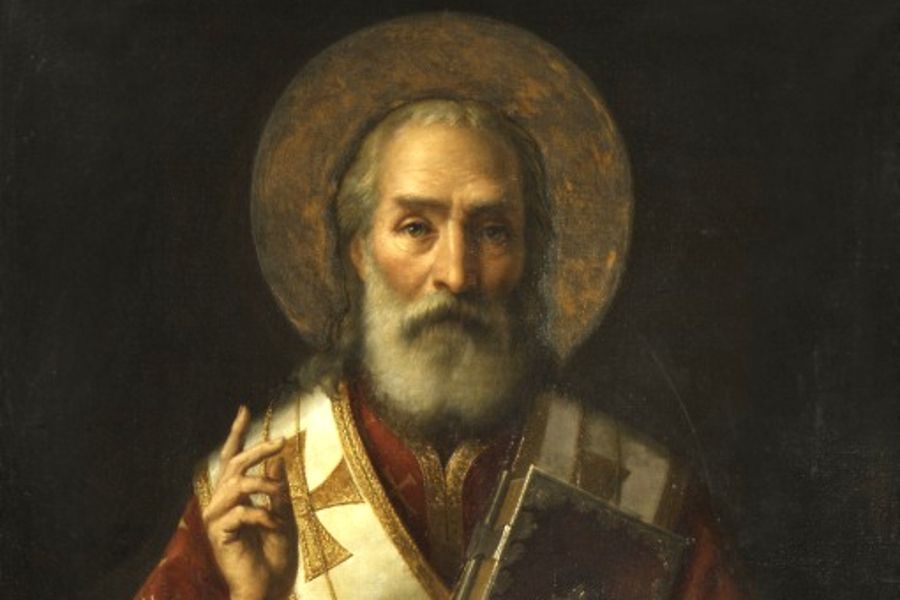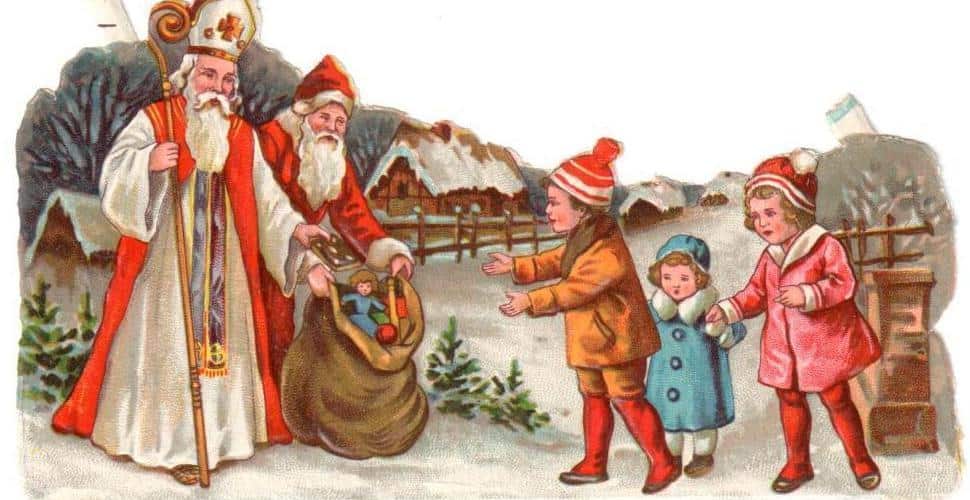Trends
The History Of Father Christmas And How He Came to be
Here is the history and legend of the Father Christmas, or Santa Claus as he is popularly known in America.

Father Christmas, or Santa Claus as he is popularly known in America is a legendary figure that originated from the Western Christian culture and is said to bring gifts during the late evening and overnight hours on Christmas Eve.
According to the legend, he is said to accomplish this with the aid of Christmas elves, who make the toys in his North Pole workshop, and with the aid of flying reindeer who pull his sleigh through the air. Here is the history of Father Christmas and how the Legend came to be.
Father Christmas dates back as far as the 16th century in England during the reign of Henry VIII when he was pictured as a large man in green or scarlet robes lined with fur. He typified the spirit of good cheer at Christmas, bringing peace, joy, good food wine, and revelry.
Until Victorian times, Father Christmas was concerned with adult feasting and merry-making. He had no particular connection with children nor with the giving of presents, nocturnal visits, stockings, chimneys, or reindeer. But as later Victorian Christmases developed into child-centric family festivals, Father Christmas became a bringer of gift
As earlier stated, the figure of Father Christmas has a rich history that evolved over centuries, blending various cultural and religious influences. The modern figure of Santa is based on folklore traditions surrounding Saint Nicholas, the English figure of Father Christmas, and the Dutch figure of Sinterklaas.
Who is Saint Nicholas
Saint Nicholas was a 4th-century Greek Christian bishop in the Roman Empire. He was known for his generosity and kindness, especially towards children and the poor. According to historical, reports, Saint Nicholas was very religious from an early age and devoted his life entirely to Christianity. In his youth, he is said to have made a pilgrimage to Egypt and Palestine. Shortly after his return, he became Bishop of Myra.
In one of the earliest attested and most famous incidents from his life, he is said to have rescued three girls from being forced into prostitution by dropping a sack of gold coins through the window of their house each night for three nights so their father could pay a dowry for each of them. There are numerous stories about him giving away his inherited wealth and traveling the countryside to help the poor and sick.
Over the course of many years, Nicholas’s popularity spread and he became known as the protector of children and sailors. His good deeds became important to different cultures as a result many people began celebrating his legend on the anniversary of his death each year (December 6). The festival became a day for gift-giving in many European countries. This tradition involved children leaving their shoes out on the eve of the feast, and St. Nicholas would fill them with small gifts and treats.
Read More:
- Top 10 Countries That Celebrate Christmas in January
- 200+ Christmas Messages To Send To Family and Friends
- Top 10 Countries That Don’t Celebrate Christmas
Origin of Santa Claus
St. Nicholas made his first coming into American popular culture towards the end of the 18th century. The name Santa Claus evolved from Nick’s Dutch nickname, Sinter Klaas, a shortened form of Sint Nikolaas (Dutch for Saint Nicholas). Sinterklaas was Anglicized into “Santa Claus” (a name first used in the U.S. press in 1773, but lost his bishop’s apparel, and was at first pictured as a thick-bellied Dutch sailor with a pipe in a green winter coat.
The American Santa Claus is generally considered to have been the invention of Washington Irving and other early nineteenth-century New Yorkers, who wished to appease the sense of the American children help calm down riotous Christmas celebrations, and refocus them on the family. In 1809, Washington Irving helped to popularize the Sinter Klaas stories when he referred to St. Nicholas as the patron saint of New York in his book, The History of New York.
Washington Irving’s book was a parody of the Dutch culture of New York, and much of this portrait is his joking invention. According to Wikipedia, Irving’s interpretation of Santa Claus was part of a broader movement to tone down the increasingly wild Christmas celebrations of the era, which included aggressive home invasions, substantial premarital sex, and public displays of sexual deviancy.
Merger with Santa Claus
Early representations of the gift-giver from Church history and folklore, especially St Nicholas, merged with the English character Father Christmas to create the mythical character known to the rest of the English-speaking world as “Santa Claus”
The popular American myth of Santa Claus arrived in England in the 1850s and Father Christmas started to take on Santa’s attributes. His physical appearance was however variable. His costume became more standardized, and although depictions often still showed him carrying the holly crown which was eventually replaced with a hood.
By the 1880s new customs had been established, with Santa Claus becoming known as Father Christmas. He was often illustrated wearing a long red hooded gown trimmed with white fur. It still remained common, though, for Father Christmas and Santa Claus to be distinguished, and as late as the 1890s there were still examples of the old-style Father Christmas appearing without any of the new American features
As England no longer kept the feast day of Saint Nicholas on 6 December, the Father Christmas celebration was moved to 25 December to coincide with Christmas Day. Most residual distinctions between Father Christmas and Santa Claus largely faded away in the early years of the 20th century, and modern dictionaries consider the terms Father Christmas and Santa Claus to be synonymous.


